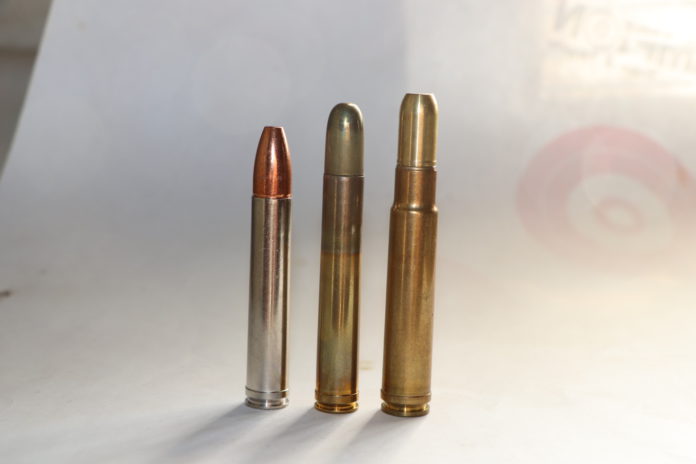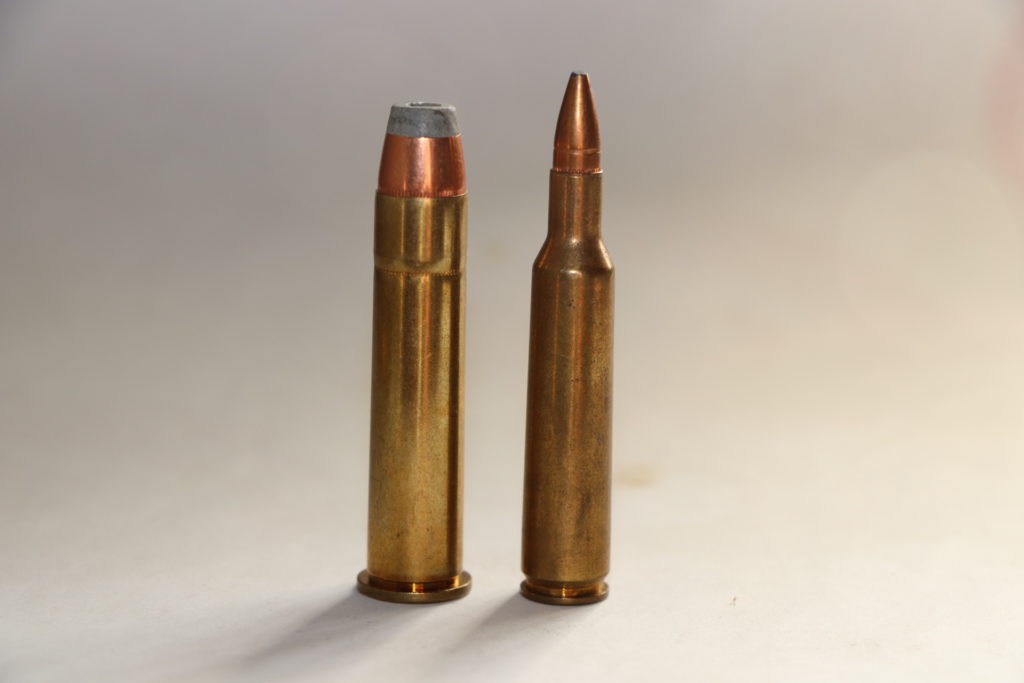
BY STEVE COMUS
In the shooting sports, as is the case in many human endeavors, there is a temptation to treat numbers as absolutes. That is fine in many scenarios, but not universally.
For example, hunters often put full faith and allegiance in the energy a bullet delivers to the game animal (measured in foot/pounds). Like a window sticker on a new car, it gives a ballpark estimate of effectiveness but doesn’t always tell the whole story.
If energy was universally applicable, then the 6mm Remington and the .45/70 Govt. cartridges would be equal because, respectively, they deliver muzzle energies of 2,133 and 2,182.
The 6mm Remington (0.243-inch diameter) achieves that energy at 3,100 feet per second velocity, while the .45/70 delivers it at 1,810 fps.
If the animal being hunted is a deer, both are effective, although the 6mm would be effective at a longer range. But if the animal being hunted is a bear, it is a different story. The .45/70 is effective while the 6mm is marginal, at best – not something one would recommend for bruins.
Take it to another level, and consider a .50 caliber, round ball from a muzzleloader. Powered by 120 grains of black powder to 2,043 fps, it delivers 1,694 ft/lbs of energy. Yet it is every bit as deadly as either the 6mm or the .45/70.
In Gundom, there continues to be an ongoing debate as to whether a smaller bullet at higher speed is better than a bigger bullet going slower. Both can work under the right circumstances.
Historically, there were champions for each side in the debate. Gunmaker Roy Weatherby championed high-speed, small bore, while legendary gun writer Elmer Keith was the poster boy for big bullets going slower.
I was fortunate to have discussed this subject with both and can attest that they both were ultra-serious about their views. And both had field experience upon which to base their arguments.
Like many things in life, there are degrees of validity in those arguments, with one view more valid in some situations than the other, and vice versa.

Over the years, I have found myself following both ethics, allowing the individual situation to dictate the choice. And in some instances, I have married the two into a single choice.
For example, if a big, heavy bullet going slowly can work, why not use that same big, heavy bullet going faster? Kind of the best of both worlds within reason.
Hence, when I was in Africa where big guns make sense for big animals, I evolved over time from the .458 Winchester to the .458 Lott to the .460 Weatherby. They all shoot the same bullets. The difference is that, respectively, they send that same bullet out at around 2,000 fps, 2,300 fps and 2,600 fps. There is a huge difference in both penetration and energy among them.
Yet there is no need for big and heavy at any speed when hunting pronghorns on the open prairie. For those hunts, a flat-shooting, high-speed small caliber bullet works wonders.
What is important is that the bullet delivers quickly lethal results and a .24 or .25-caliber bullet can do that marvelously on a pronghorn.
In that scenario, if one were to go with energy alone, a .300 magnum would be considered better than a .270 Winchester. Although both can work on pronghorns, the .300 magnum will not kill the prairie speedster any deader than the .270 at any normal shot range.
When considering specific caliber and ammo for a given hunt, it is important to think about as many factors as possible. Energy is but one of them.
With that in mind, I have heard some hunters suggest that some cartridges represent “overkill.” I balk at that suggestion because the last time I checked, there is but one degree of dead.
For example, what is a good deer hunting rifle? In the U.S., the answer ranges pretty much from .243 Winchester to .300 magnum, with a host of calibers in between. Yet, I did a double-take when I saw that the famed Johann Fanzoj gunmakers in Austria had created what they termed was a deer hunting side-by-side double rifle in .375 H&H Magnum.
In Europe, deer (both roe and red) are taken routinely with larger caliber rifles – often the 9.3x62mm in bolt rifles or 9.3x74R in break-open singles and doubles (9.3mm is .366 caliber).
Some hunters might consider a .36 or .37 caliber bullet too big for deer. Yet, when one considers the way deer are hunted in Europe, those sizes make total sense.
In the end, so long as the bullet used delivers enough terminal results to dispatch the game animal quickly and cleanly, all else is academic, at best, and often just downright moot.
Steve Comus is a nationally recognized hunting editor with Safari Club International and a WON Guns and Hunting Guns Editor. His column appears every other week in WON and he can be reached at scomus@cox.net.



